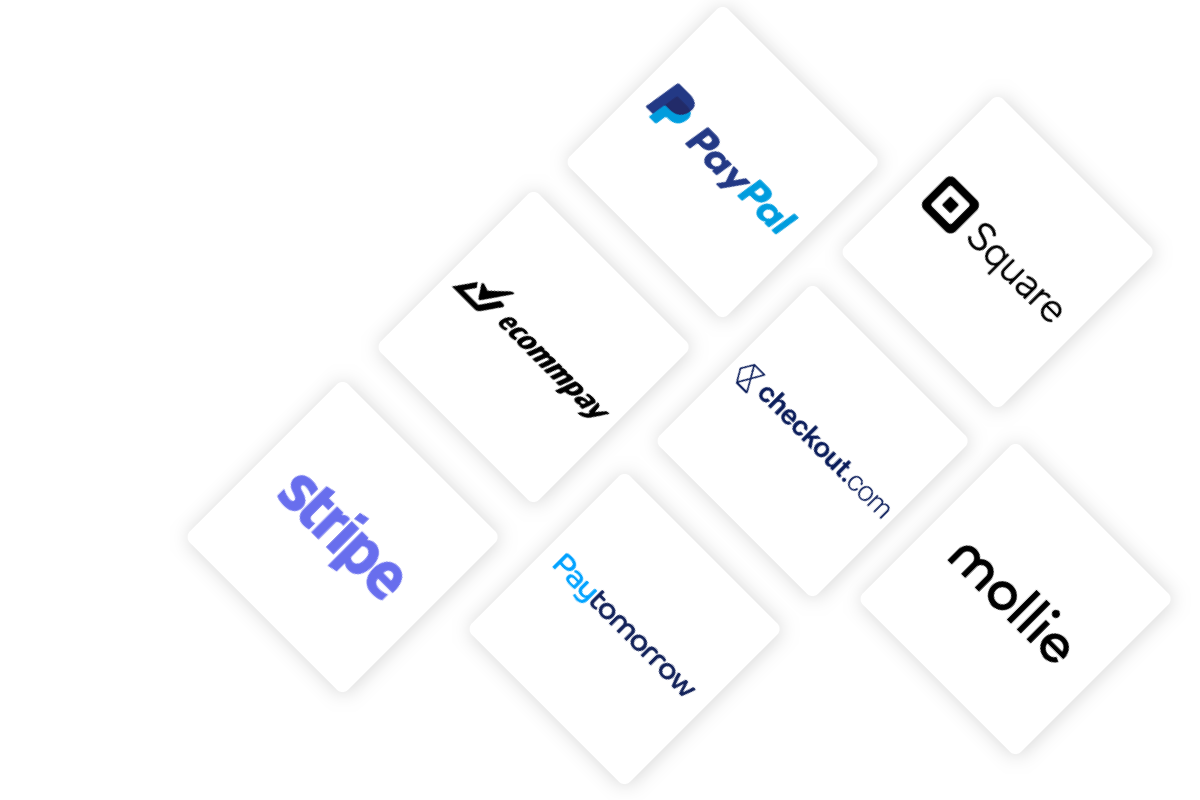Our Payment Links are different
Use your Payment Gateway
Use Multiple Payment Gateways/Methods
Not tied to any product, invoice or amount

Pre-authorize, capture payment or save a card
For SaaS platforms, payments are no longer optional. Whether you’re building invoicing software, a reservations platform, or debt collection automation, your merchants expect to be able to accept payments inside your product.
But here’s the challenge: supporting payments is rarely straightforward. Merchants come to you with their own preferred processors — Adyen, Worldpay, PayPal, Stripe, local acquirers — and if you can’t support them, you risk losing the deal.
This is the classic tension for product leaders:
Do we build native PSP integrations one by one?
Or do we plug into a multi-gateway connector to get broader coverage quickly?
Let’s explore the difference, and why so many SaaS product teams are now moving away from native builds to aggregated solutions.
The Native PSP Path: Simple to Start, Hard to Scale
Many SaaS platforms start by integrating a single payment service provider — often Stripe. It’s an easy way to tick the payments box and get something live quickly.
But while the first integration might take a few weeks, every additional PSP multiplies the effort:
Engineering resources — integrations can take 3–6 months each, depending on complexity.
Compliance overhead — PCI, SCA, PSD2, and local regulations add maintenance burden.
Merchant diversity — one PSP is never enough; larger merchants demand choice.
Support drag — every update, bug, or API change requires developer attention.
The result? Your product backlog gets clogged. Every time sales asks for a new PSP connector, product leaders face a trade-off: delay roadmap features or say no to the merchant.
The Real Cost of Saying No
For SaaS companies, payments aren’t just about monetisation. They’re about retention and competitiveness.
Imagine an invoice automation SaaS like InvoiceStack. A prospective merchant wants to use Worldpay because of existing banking relationships. If InvoiceStack can’t support it, that deal may go to a competitor who can.
Or take a debt collection SaaS like Orbit. If a major client like Mercedes demands their PSP of choice, you either deliver quickly or risk losing a flagship customer.
In both cases, the cost of saying no is higher than the cost of building. It’s customer churn, lost revenue, and reputational damage.
The Multi-Gateway Connector Approach
This is where a multi-gateway connector (or payment processor aggregator) comes in. Instead of building PSP connectors one by one, you integrate once with a platform like Shuttle — and instantly gain access to 40+ global PSPs.
Benefits for SaaS product teams:
Fast roadmaps — payments don’t clog backlog; integrations don’t block new features.
Broad coverage — merchants get the PSP they want, without delays.
Future-proofing — as new PSPs are added, they’re available to your merchants automatically.
Checkout rules — merchants can set logic like “for transactions over $10k, only show ACH,” tailoring the payment flow without development effort.
Zero integration maintenance — Shuttle handles updates, API changes, and compliance.
In short: you shift from being the bottleneck to being the enabler.
SaaS Use Cases: Where Multi-Gateway Connectors Win
1. Invoicing Software
Invoicing SaaS platforms often start with Stripe or PayPal. But their merchants — especially mid-sized businesses — quickly ask for regional PSPs or lower-cost rails like ACH. With Shuttle a number of invoicing SaaS offer multi-gateway choice instantly, without diverting product engineering.
2. Debt Collection Software
Debt collection platforms need flexibility. Large merchants like Mercedes won’t change PSPs just to adopt new software. Orbit used Shuttle to launch payment links for Mercedes in just 2 weeks — avoiding a long build that would have delayed revenue and risked the deal.
3. Reservation & CX Platforms
CX and reservations software increasingly embed payments in conversations — AI chatbots, phone voice assistants, customer service flows. A multi-gateway connector ensures payments can happen seamlessly in any channel, with the PSP merchants already trust.
Shuttle vs Native: A Direct Comparison
| Factor | Native PSP Integration | Shuttle Payment Links |
|---|---|---|
| Time to integrate new PSP | 3–6 months per PSP | 2 weeks for all PSPs |
| Developer resources | High — constant backlog drain | None — managed externally |
| Maintenance | Ongoing updates, compliance, API changes | Included in aggregator service |
| Merchant choice | Limited to a few PSPs you build | 40+ PSPs out of the box |
| Competitive risk | High — lost deals to competitors with more PSPs | Low — ability to say “yes” to any PSP request |
| Product roadmap impact | Significant disruption | Roadmap stays clear |
Industry Trends: Why This Matters Now
According to McKinsey, global payments revenue exceeded $2.2 trillion in 2023, and merchants increasingly expect payments flexibility from their SaaS providers.
At the same time, Bain research shows the cost of merchant churn can exceed 5x the cost of acquisition. Losing deals over PSP coverage is not just frustrating — it’s expensive.
And as SaaS platforms adopt more AI and automation in customer experience, payments need to be agent-ready: able to flow through chatbots, voice agents, and workflow tools without engineering drag. Multi-gateway connectors are the only scalable way to achieve this.
Final Thought: Roadmaps Should Drive Growth, Not Payments Plumbing
Product leaders shouldn’t have to choose between building payments connectors and shipping core product features. Payments should accelerate growth, not clog the roadmap.
Native integrations might get you started. But multi-gateway connectors future-proof your platform, protect against competitive risk, and let you say “yes” to every merchant request.
👉 Explore how Shuttle’s Payment Links for Platforms give SaaS teams fast roadmaps, PSP coverage, and merchant retention — all without developer effort.



